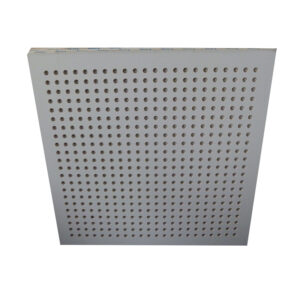Introduction
Acoustic ceilings are known for their functional benefits in improving sound control and acoustics in buildings. However, many people may wonder if these ceilings can also be customized to align with the design aesthetic of a building. In this article, we will explore the possibilities of customizing acoustic ceilings to match the design vision and aesthetic preferences of different spaces. Understanding the customization options available will help architects, designers, and building owners create visually appealing environments without compromising on acoustic performance.
Design Versatility
Acoustic ceilings offer a wide range of design options, allowing for customization to suit different architectural styles and interior designs. They are available in various materials, textures, colors, and patterns, providing ample opportunities for creative expression. Whether it’s a modern, minimalist look or a more traditional and ornate design, acoustic ceilings can be tailored to match the desired aesthetic of a building. This versatility ensures that the acoustic solutions seamlessly integrate with the overall design concept.
Material Selection
The choice of materials for acoustic ceilings can greatly influence their appearance and customization potential. Different materials, such as mineral fiber, metal, wood, or gypsum, offer distinct visual characteristics and finishes. These materials can be further enhanced through surface treatments, coatings, or laminates to achieve specific textures or sheens. By carefully selecting the right material and finish, acoustic ceilings can blend seamlessly with the desired design style, whether it’s sleek and modern or warm and traditional.
Custom Shapes and Sizes
Acoustic ceilings can be customized in terms of shapes and sizes to accommodate unique architectural features or design requirements. They can be designed as flat panels, curved surfaces, or even three-dimensional elements to add visual interest and depth to a space. Custom shapes and sizes allow for the creation of focal points, dynamic ceiling patterns, or the incorporation of functional elements like lighting fixtures or ventilation systems. This customization enables architects and designers to create visually stunning ceilings that align with the overall design aesthetic.
Integration of Elements
Acoustic ceilings can seamlessly integrate other design elements to enhance the overall aesthetic of a building. They can accommodate recessed lighting, speakers, HVAC vents, or other services, maintaining a cohesive look while optimizing functionality. The integration of these elements ensures that the acoustic ceiling becomes an integral part of the design, rather than an isolated feature. This level of customization allows for a harmonious blend of aesthetics and performance.
Conclusion
Acoustic ceilings can be customized to match the design aesthetic of a building, offering a versatile range of options in terms of materials, textures, colors, shapes, and sizes. From modern and minimalistic designs to more traditional and ornate styles, acoustic ceilings can be tailored to seamlessly integrate with the overall design vision. The ability to customize these ceilings ensures that the functional benefits of sound control and acoustic performance are not compromised. Architects, designers, and building owners can confidently explore the customization possibilities of acoustic ceilings to create visually stunning spaces that offer both aesthetics and optimal sound environments.



